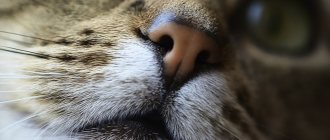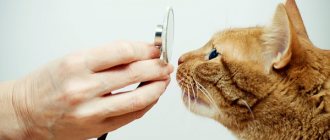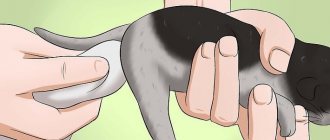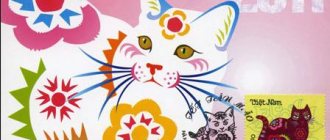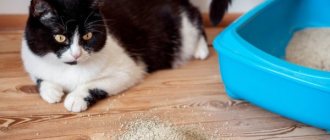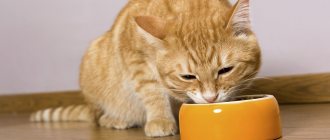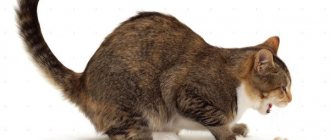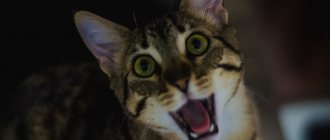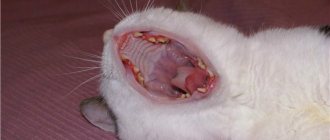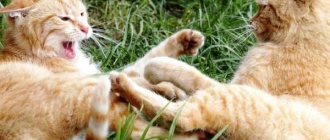The happy day has come when you have your own little leopard - bengal kitten. Usually, a Bengal kitten quickly gets used to a new place, because Bengals are very inquisitive and friendly cats. Most likely, the first time upon arrival, the kitten will follow you on your heels, exploring the area, periodically uttering its loud “Meow”. But sometimes bengal babies are scared of moving and your task is to make it easier for the kitten to adapt to a new place.
To facilitate mutual understanding between you and the kitten, remember that each Bengal kitten is an individual whose characteristics are treated with understanding.
A long move to a new place of residence can be very frightening for a kitten - strangers, smells, noises. In addition, the Bengal kitten will begin to miss his mother cat and his friends for fun games. A Bengal kitten may start screaming loudly when moving, especially in a carrier, which Bengals do not like. Be patient, pet the kitten and try to calm it down. But don't be too intrusive; let the kitten get comfortable in your home.
your Bengal kitten arrives at home, protect it from noisy children and pets. Do not allow your little children to run after the kitten screaming. Have a conversation about how to properly handle a small kitten. Typically, Bengal kittens get along well with children and willingly play with them.
By the way, this article will help you prepare and buy everything you need for your kitten.
When the kitten arrives, try to limit its movements to a small area with a bed, a scratching post, bowls of food and water, and a litter tray. This makes it easier for the Bengal kitten to adapt to a new environment. This is very important if you have other pets. If you immediately allow the kitten to run everywhere around the house, then there is a risk that the baby will not find the path to his litter box.
All the dangers for a kitten at home can be read here.
History of the breed
In the sixties of the last century, the progenitor of the breed was brought to America. He was originally from Malaysia. The kitten was from an Asian leopard cat, just as wild.
However, Jane Mill managed to find a common language with him and tame him.
After some time, the wild Asian leopard felt like a real master of the house, and he took a liking to the owner’s black cat.
As a result of their “relationship,” wonderful Bengal kittens were born.
Thanks to the non-aggressive nature of its wild ancestors, the domestic “mini-version” of the leopard has a gentle character and does not conflict with other pets and children.
The breeders had a hard time, because the Bengal cat becomes capable of fertilizing a female only in the fourth generation. That is, only a great-grandson is capable of producing offspring.
And so breeders had to cross the Bengal kitten with males of various breeds until the perfect kittens were obtained.
Preventing constipation
If your cat is constipated often, then it is worth reviewing its diet and, if possible, changing it.
The diet should contain all useful microelements and a decent amount of plant fiber. Do not feed the animal from the table. Buy good quality dry food for her or prepare it separately. In addition to meat, add vegetables (carrots, pumpkin, cauliflower, beans) and steamed bran to the porridge.
To prevent a cat from swallowing a lot of its fur, it is worth combing it more often and giving preventive pastes to remove hair from the intestines.
For good intestinal function, the cat must move a lot. Buy her balls or mice, climbing machines, and take her outside for a walk more often. An active lifestyle has a beneficial effect on intestinal motility.
Sources:
- Constipation in cats
Video on the topic
In cats, this is a fairly common phenomenon that is associated with poor nutrition, insufficient fluids, or ingestion of fur. Sometimes difficult bowel movements may indicate the presence of a serious illness. If this problem occurs in your pet, immediate treatment should be started.
Appearance
The coat is short, smooth, shiny. But the color may vary. The standard is considered to be spotted, like a leopard, marbled, and simply brown.
But cats with a color like a snow leopard are especially beautiful.
Sometimes cute long-haired kittens appeared in the litter, which were then separated into a separate group - silken Bengals (Kashmirs).
Girls' body weight is about 4 kilos, but boys can gain seven kilos. The muscles are perfectly developed, the movements are clear, but at the same time smooth like a cat.
How to treat constipation at home
Treating constipation in a kitten at home needs to be done very carefully; you need to be completely sure that it is stool retention and not intestinal obstruction. For this:
- You can treat a kitten at home using Vaseline oil. It does not have a negative effect on the liver and is not absorbed into the kitten’s large intestine. Vaseline oil does not have an unpleasant taste and, as a rule, it does not cause disgust in your pet.
- When a kitten develops symptoms of stool retention, you can help it with the help of the drug Lactunas. It not only has a mild laxative effect, but also restores damaged intestinal microflora and protects the body from the effects of toxic substances.
Treating constipation in kittens at home can only be done after consulting a veterinarian, since stool retention can easily be confused with intestinal obstruction. You can suspect intestinal obstruction in a cat by the release of an unpleasant odor from the mouth.
Character trait
Over the course of a long time, the breed was improved. The goal of the breeders was to obtain non-aggressive and courageous offspring. All cowardly kittens were considered a marriage. So the line turned out more and more clean.
The Bengal cat is famous for its grace, calmness, love of communication, tenderness and devotion.
However, “wild blood” also makes itself felt. The animal is very dexterous, quick, and intelligent. Cats love active games.
Their favorite pastime is running, because the “predator’s blood” still flows through their vessels. So don't be surprised if your pet takes over cabinets, sofas or shelves.
The Bengal cat is very smart, she is able to remember what her owner does and then reproduce it.
Opening doors or windows, turning on or off the light, flushing the toilet - all these are trivial tasks for representatives of this breed.
They love water and enjoy swimming or keeping their owner company.
Although the cat is domestic, it still has the instinct responsible for protecting its “leader”. Having become a real leader for your cat, you don’t have to worry about your “safety.”
A Bengal cat will protect you at the cost of its life.
The cat's predatory instinct will not allow a single mouse in the house to even run past. But it’s somehow stupid to use a pet that costs thousands of dollars for such purposes.
You can admire a domesticated leopard for hours, participate in exhibitions, but never use it as a mouse or rat trap.
Take care of your fingers, otherwise the cat may bite you while playing. And don’t hold it in your arms for a long time, the Bengali doesn’t like it. Although loneliness is not for a representative of this breed. Everything in moderation.
Treatment
Even an experienced breeder will not be able to diagnose a dangerous disease just because the cat’s nose has become hot and dry. It is easy to make a mistake in diagnosis even based on a combination of external signs.
The main thing that the owner of a sick animal should do before contacting a veterinarian is to measure the temperature of his pet. At home, its indicator will be more accurate than in the clinic, where the cat usually experiences additional stress, aggravating the patient’s condition.
What you can handle on your own
If nothing serious has happened, the owner can bring things back to normal himself - there are a lot of similar situations, we will describe only the most common ones.
Nasal contamination
If you forget to regularly clean your pet's nose, heavy contamination will make it difficult for him to breathe and interfere with the production of physiological lubrication. As a result, thermoregulation will be disrupted and the nose will become hot. A dirty nose must be carefully cleaned both outside and inside so as not to damage sensitive tissues.
After 15–20 minutes, all parameters of his condition are normalized.
Clean your cat's nose thoroughly and it will immediately feel better.
Sunburn
All cats love warmth and can happily doze off “in the sun.” But a long stay under the scorching rays of the sun will definitely not do them any good. Incidents of burns are more common than one might think, especially in animals with delicate pink noses.
A cat who has received a sunburn will have a red, hot, and sore nose. After some time, the skin on it will become rough, rough and dry. Immediately use anti-burn, moisturizing and anti-inflammatory agents - for example, Panthenol. Apply the medicine carefully so that it does not get into the nostrils, and repeat the procedure more often as the product is absorbed.
Cats with pink noses are more likely to get burned than others.
Allergy to chemicals
Many animals, like people, are prone to allergies. Remember this when cleaning your apartment - poorly washed cleansers can cause considerable harm to your inquisitive cat, who literally pokes his nose into every corner of the house.
You are cleaning with gloves, and perhaps even a respirator, but the cat’s nose is not protected by anything... Aggressive chemicals entering the respiratory system can cause severe allergies in the animal, and the nose will be the first to react: its temperature will increase, discharge or rashes will appear.
Chemicals can cause allergies in cats
It is urgent to carry out repeated wet cleaning, wash off with clean water all the remaining chemicals that provoke irritation and allergic reactions. At the same time, consult your veterinarian about which antihistamines and in what dosage should be given to your cat.
In what cases is the help of a veterinarian required?
Do not self-medicate and do not waste time; at the slightest suspicion that the animal is sick, contact a veterinary clinic. Only a doctor can conduct all the necessary studies to clarify the picture of the disease, make an accurate diagnosis and prescribe effective treatment.
A signal for an urgent visit to the veterinarian can be either the fact that the cat’s nose remains hot and dry for more than half an hour for no apparent reason, or additional alarming symptoms that were described above. Timely seeking medical help can save your pet's life - for example, in case of poisoning.
The most common condition that causes a cat's nose to become hot is rhinotracheitis, a viral infection of the upper respiratory tract. An infected cat is in a depressed state, and its nose soon becomes wet from being dry, discharge appears from it, from the eyes, from the mouth... the nose turns red, becomes covered with wounds and crusts. It is difficult for a cat to breathe and eat; the digestive and nervous systems suffer. If this disease is left untreated or treated incorrectly, the cat can suffer serious complications and even die.
Video: what to do if your cat has a cold
Features of maintenance and care
Nothing fancy is required. However, there are some nuances that will help your pet feel happy and satisfied with life.
First of all, make sure that you have enough free space for your cat to play actively. Otherwise, the animal will be uncomfortable, it will be sad and even sick.
Now about the tray. If it is in the wrong place, the filler is not suitable (compressed wood is better, because Bengals love to dig in sand/sawdust).
Therefore, choose a tray in advance so that its sides do not allow the filler to fly beyond its limits.
Don't forget to keep it clean. If there is a smell from the litter box, there is excrement or another cat has left. But you shouldn’t wash it with chemicals either.
Otherwise, your Bengal cat will not smell its own scent and will perceive this litter box as a toilet.
The coat is easy to care for. Its healthy shine depends on a balanced and high-quality diet. There is no need for combing, but your pet is unlikely to refuse stroking its back with a soft brush.
Why does this happen?
If a cat's nose is dry and warm, this does not mean that he is sick. There are several reasons for a cat's dry nose:
- If the animal has just woken up, its nose will almost always be dry and warm. In a dream, a cat does not lick itself, which means it does not moisturize its olfactory organ. After some time, the nose will become moist and cool. This is normal and not a cause for concern.
- If the cat ran, jumped, played, or was in the open sun a lot, then his nose could dry out under the influence of his own body temperature, the air temperature indoors or outdoors, as well as from wind and dust. When the cat calms down and moves into the shade or indoors, everything will return to normal. The same applies to cases where the cat was lying near a hot radiator or in a room with excessively dry air. Central heating radiators dry out people's skin, not to mention a cat's sensitive nose.
- When it is too cold outside or indoors, the cat does not lick its nose, and it becomes cold but dry. This is also a variant of the norm. Once warm, the cat will begin to lick itself again, moistening its nose.
Predisposition to diseases
In fact, the Bengal cat rarely gets sick. However, despite the hard work of breeders who tried to eliminate various genetic abnormalities by carefully selecting males and females, some diseases could not be completely “eradicated.”
Therefore, you need to carefully select a pair for your pet in order to minimize the risk of serious diseases.
- Hypertrophic cardiomyopathy. This disease tops the list of the most frequently reported genetic diseases characteristic of Bengal cats. Unfortunately, it is extremely difficult, almost impossible, to independently determine this disease in your pet. Often the first symptom is sudden death, but if you visit the veterinarian in time, after auscultation, he will hear a heart murmur and suspect that your Bengal cat is sick.
- Unfortunately, Bengals are prone to intestinal inflammation. Symptoms may include pain when lightly pressing on the stomach (however, you should not squeeze the pet with all your might), loss of appetite, body temperature often rises, and the Bengal cat becomes lethargic. Be sure to visit a veterinarian as soon as you notice that your pet has become restless, loses her appetite, or has an elevated body temperature. After all, intestinal inflammation can be not only an “independent” disease, but also the main clinical sign of an incipient infectious disease.
- Feline leukemia is also frequently reported among Bengals. This is the same blood cancer as in humans. And the predisposition to it is inherited. It is extremely important to know about the health status of not only the kitten’s parents, but also its grandparents, in order to eliminate the risk of disease.
- It is very important to monitor what your pet eats. Because the gastrointestinal tract of these beauties is very weak. Poor quality food can lead to serious poisoning. Therefore, be sure to control what is in your pet’s bowl, change the water, wash the dishes (without using household chemicals).
- Flat chest syndrome. It is believed that this pathology develops as a result of a disorder at the gene level of metabolism. As a result, kittens' chests appear flat and their ribs appear to curl inward. Unfortunately, kittens with this pathology rarely survive, since the heart and lungs become crowded in the chest.
- "Dry nose syndrome." Young (under one year old) kittens most often suffer from this. The symptoms are simple: the skin on the nose dries out, cracks, and then ulcers may appear. Careful care of your pet will help avoid this problem.
- Allergy to medications. Many representatives of this breed show intolerance to anesthesia drugs. You should be extremely careful and never resort to self-medication. Otherwise, you won’t be able to save your handsome pet at home if he goes into anaphylactic shock, which will lead to suffocation and cardiac arrest.
Not all owners have to deal with the situation that a Bengal cat gets sick often and for a long time. Most pets of this elite breed, who visit the veterinarian on time for the necessary vaccinations, live a long and happy life. However, it is better to know in advance what health problems may arise in order to promptly, in the early stages, recognize the disease, preventing it from growing to the size of a catastrophe that threatens the life of the pet.
Causes of dry nose
During sleep or within 30-40 minutes after the pet wakes up, his nose is dry, this is the norm, because when a cat sleeps, its nose is not moisturized.
The mucous membranes do not work properly in hot weather, in dry air, when the room is poorly ventilated, or when the pet stays near heating appliances for a long time. A kitten has a dry nose because the kitten cannot lick it himself, and because of his age, secretion is not yet produced. During active play, a cat's temperature rises. A pet's inactivity can also cause a dry nose or due to stress.
A cat's dry nose after giving birth is a natural reaction of the body to lambing. A pregnant woman's temperature may rise slightly because her metabolism accelerates, while a nursing cat's nose dries out quickly. After castration and sterilization, animals have a slightly elevated temperature, this is the body’s reaction to surgical intervention. Older Thai cats have a dry nose, this is considered normal for this breed.
If your pet has a dry nose, it is recommended to monitor it and, if necessary, measure its temperature.
But it is still recommended to carefully observe the pet during the day and check the humidity of its nose, and if necessary, measure the temperature. The normal temperature for cats is 38-39 °C, for Bengal and exotic kittens it is 39-40 °C, and for pregnant cats it is 0.5 °C higher, if above these values it is worth contacting a veterinarian.
About the general health of Bengalis
I would immediately like to debunk the widespread myth that purebred representatives of domestic cats have very weak immunity, that they often get sick, dying from problems that do not threaten street and mongrel animals. On the contrary, breeders select healthy, that is, strong, hardy, individuals not burdened by poor heredity and genetic abnormalities. So the saying “heals like a cat” fully applies to the Bengal purebred breed. But there is another factor: due to the still small population of this particular type of cat, breeding is problematic. Closely related breeding is often practiced, which actually threatens the deterioration of the health of the offspring. In addition, breeding often involves introducing new genes into a pure breed. Sometimes this negatively affects the overall health, especially when the business is handled by an illiterate or irresponsible breeder. Therefore, when planning to buy an expensive kitten, it is better to turn to large nurseries, where they constantly update breeders and do not offer dubious suitors to Bengal cats. Kittens from establishments with experience and an established reputation are usually tough, like their ancestor, the hardy wild Bengal cat.
Causes of constipation
- Feeding. Most often, constipation occurs when using dry cat food. Fixing foods include rice, pasta and liver.
- Blockage of the cat's intestinal lumen by foreign objects. It can occur after swallowing solid pet objects, and sometimes constipation occurs after feeding fish heads or bones to a cat. Mechanical blockage of the lumen can occur due to the entry of hairballs into it during licking.
- Lack of physical activity for your pet. If the animal constantly lies down, then metabolic processes and intestinal motility are inhibited, which causes the development of constipation.
- Rehabilitation after surgical interventions. The use of anesthesia disrupts bowel function for some time, during which time constipation may develop.
- Intestinal disorders. Most often, intestinal peristalsis worsens with age, which causes longer excretion of feces from the body.
- Diseases. Constipation is often found in obesity and diabetes. Quite often, constipation is caused by the activity of helminths in the animal’s intestines.
- Damage to the visceral layers of the peritoneum and the development of adhesions on them. The peritoneum is built like two sheets, one lining all the internal organs, and the other the walls of the abdominal cell. Under the influence of various factors, adhesions can form on the peritoneum, disrupting the functioning of the intestines.
- Constipation in a kitten. Newborn kittens need maternal care; licking the belly activates intestinal motility and the movement of feces in them. In the absence of maternal care, the kitten may develop this condition.
- Inflammation of the paraanal glands in a cat. In this case, the gland increases in size and prevents feces from leaving the intestinal lumen.
Symptoms of illnesses in Bengal cats
Each specific disease has its own signs and symptoms, but a number of factors demonstrating the onset of the disease are common, namely:
- the cat has vomited and/or loose stools more than twice within one day;
- there is no stool for more than two days in a row, and then the cat goes to the toilet with blood;
- complaints during urination;
- weak appetite, and even more so a complete refusal to eat;
— the cat eats well, but has become thin;
- sour eyes, copious mucus discharge from the nose;
— bloody discharge from the cat’s loop or the cat poops blood;
- plaque in the ears has become black;
- unhealthy color of the mucous membranes, the appearance of ulcers on them;
- compacted neoplasms on the skin and/or under it.
Together with the unusual behavior of a Bengal cat (anxiety, aggression, or, on the contrary, lethargy to the point of apathy, constant drowsiness), any of the listed signs is a good reason to call a veterinarian and undergo an examination. The likelihood that your pet is seriously ill is high.
When to contact a veterinarian
Home treatment is unacceptable if the cat’s nose is not only dry and hot, but also covered with cracks and scabs. It is especially dangerous to hesitate if the animal’s behavior has changed, and many accompanying abnormalities have appeared (vomiting, loss of appetite, diarrhea, constant drowsiness).
Respiratory diseases
If your pet begins to constantly sneeze and experience obvious difficulty breathing, this may be a sign of a respiratory infection. If dry formations are visible to the naked eye in the nasal passages, then it is likely that a tumor is developing. It is impossible to make a diagnosis on your own: you will need an examination using a special endoscope, as well as a cytological examination of the contents of the nasal sinuses.
Before going to the veterinarian, you can only alleviate the pet’s condition. To do this, you need to give the cat a sufficient amount of water and humidify the air in the apartment as much as possible.
Severe dehydration, fever
In most cases, dehydration itself is a sign of untreated, “advanced” diseases. In addition to a dry, hot nose, you may notice:
- sunken eyes;
- dry gums;
- loss of skin elasticity;
- frequent breathing.
Sometimes the above symptoms may be accompanied by fever. To know for sure whether your cat has a fever, you need to have a special veterinary thermometer in your home medicine cabinet.
The exact causes of a sharp increase in temperature and dehydration are determined by a veterinarian. Until a final diagnosis is made, it is not advisable to give the animal any medications. It is only allowed to solder the cat with rehydration solutions (Hidrovit, Regidron).
If the symptoms are not obvious, then it is worth checking your pet’s temperature with a rectal or ear thermometer.
Note! For representatives of the cat family, a temperature of 38.5 - 39.2 is considered the absolute norm.
You can also evaluate the viscosity of saliva (simply open the animal’s mouth) and skin turgor. To understand whether elasticity is reduced, just lift the cat by the scruff of the neck and lower it to the floor. Normally, the skin tubercle that appears will disappear in just a second. And although the results of the above methods for assessing the animal’s condition are considered too subjective, obvious deviations will be a signal for an early visit to a doctor.
Attention! If the animal does not get up and is breathing poorly, it is not worth spending time on home diagnostics and initial rehydration. You need to urgently go to the veterinary clinic.
It is still very difficult to figure out why a cat has a hot and dry nose. Any owner needs to remember an important rule: any changes in the pet’s behavior should be a cause for concern. If the cat is active and has a good appetite, then a hot nose is just a variant of the norm.
You can also contact our site's staff veterinarian, who will respond to them as soon as possible in the comment box below.
Many cat owners are convinced that a hot and dry nose in an animal is the first and unmistakable sign that their pet is sick. This is a very common misconception - the temperature of the nose lobe does not reflect the general body temperature and certainly does not always signal illness. However, there is such a possibility; it needs to be checked and excluded immediately.
Main ailments of Bengal cats
The weakest point in the body of Bengals is the gastrointestinal tract - this is the genetics of this breed. According to statistics, almost every representative of the Bengal breed suffered from such problems at least a couple of times in their life. More often than other manifestations, Bengal cats and cats experience indigestion due to food poisoning and changes in food. Having an expensive Bengal pet, to put it mildly, it is unwise to feed the animal cheap food from supermarkets, which experts have rightly dubbed cat poison. In addition, indigestion in a sensitive stomach leads to inflammatory bowel diseases, diarrhea appears, blood in the stool, and the Bengal cat’s body temperature rises.
Symptoms of constipation in a cat
- Lethargy, loss of appetite in the cat. When intestinal blockage develops, the animal stops eating completely.
- Fecal masses are rare or absent. After trying to go to the litter box, the owner discovers scanty and dry feces or their complete absence.
- Temperature increase. This is due to the development of intoxication of the body with intestinal obstruction or peritonitis.
- Nausea and vomiting . It may occur as a result of intoxication or after eating with complete blockage of the intestinal lumen.
- Pain in the abdominal area. The abdominal muscles are tense during constipation.
- Lumps in the abdominal cavity. When palpating the abdominal wall, you can feel a dense cord, this is a section of the intestine containing feces.
Other diseases most commonly reported in Bengal cats
The list of other ailments recorded in Bengals is small, but recently it has been noted that they do not occur so rarely, almost on a par with problems of the stomach, esophagus, and intestines.
Cardiology
Pathology of the structure of the heart - hypertrophic cardiomyopathy is caused by the fact that one of the walls of the “motor” that pumps blood is thicker than the others. This causes disruption of all heart activity, leads to many problems with general health, and ends in sudden death. The pathology often does not manifest itself in any way, and the danger lies in the absence of early symptoms. Therefore, it is important for owners of Bengal cats who notice the lethargy of the animal or symptoms of severe fatigue after active games to conduct a heart examination using ultrasound and ECG. Such examination should be carried out regularly for all Bengal cats up to the age of five. The causes of cardiomyopathy have not yet been reliably determined, but genetic and hereditary factors play a decisive role. On average, the percentage of Bengals with this disease is from 25 to 30-plus, which puts mini-leopards on the penultimate line in the list of ten known and recognized breeds prone to heart disease (the list is now headed by Maine Coons).
Genetic syndromes
Flat chest syndrome (FCK) is a condition common in newborn kittens. This serious genetic pathology in the Bengal breed has become even more common than cardiomyopathy. A disturbance in the configuration of the chest, when the ribs compress the chest cavity, interferes with normal breathing. Individuals with a severe stage of the syndrome die in the first days or weeks after birth (life spans of 10 days and 3 weeks are considered critical). If this does not happen, then the animal may continue to develop as expected, or may have a “sunken sternum” defect, which does not particularly affect health. With FCK, the ribs of the sternum are either completely flat below or funnel-shaped, curving into the middle of the chest. At exhibitions, such animals, even with all other brilliant indicators, are rejected.
Bengal kittens and young one-year-old cats are susceptible to dry nose syndrome. Visually, symptoms are revealed by cracks and crusts on the animal’s nose. Sores, if they are not lubricated with healing ointments, can gradually turn into ulcers.
The immune system
Poor functioning of the immune system is a problem inherent in lines where multiple matings between direct and very close relatives were allowed. This violation does not occur if the breeder occasionally acquires a stud or breeding cat from other breeding grounds. By tracing the pedigree of a kitten when purchasing a kitten, you can avoid the hassle of additional vaccinations and procedures such as deworming.
Like other cat breeds, Bengals have to suffer, albeit infrequently, from leukemia, as well as from urolithiasis, especially in regions where the water the cat drinks is highly hard. Unsterilized cats and cats may experience hormonal disorders, and those that eat soft, including natural food, suffer from tartar deposits. Cancer is a common problem for older pets.
How to treat constipation
There are several methods to free your pet's intestines from the accumulation of dense and dry feces. Every owner should know what to do if a cat is constipated. Constipation in cats has several treatment techniques that can be performed at home. Before starting treatment, it is necessary to exclude intestinal blockage or twisting of its loops; for this, it is worth consulting with a veterinary specialist.
- Use of laxatives.
- Use of enemas.
- Diet.
- Surgical intervention.
Use of laxatives
For constipation, people are given laxatives that can soften stool and make it easier for them to leave the intestines, but with cats the practice is a little different. It is not recommended to use human laxatives in animals without first consulting a veterinarian and prescribing the dosage of the drug in a specific case of treatment.
Vaseline oil is considered an excellent remedy for constipation in cats. The drug is excreted unchanged from the body, is not absorbed in the intestines, and when using it it is impossible to cause an overdose. For medicinal purposes, the cat should be given 1-2 ml of Vaseline oil from a syringe without a needle. The product effectively softens feces, and after just a few hours the animal goes safely to the tray. If there is no result, the procedure is carried out 2 times a day until the desired effect is achieved.
Using enemas
Thanks to enemas, you can mechanically dilute and soften your cat’s feces, allowing them to pass out easily from the intestines.
- For an enema, use chamomile decoction or water with laundry soap dissolved in it. The liquid must be brought to the approximate body temperature of the animal.
- We place the liquid in the bulb from which the infusion will take place.
- Apply a small amount of Vaseline or baby cream to the tip of the enema so that it fits better into the anus.
- 200-250 ml of liquid is poured into the intestines, after which the tip is protruded, and the animal is able to go to the toilet.
- The procedure is carried out until the intestines are completely empty.
Cat's diet for constipation
Food should not include foods that harden feces; exclude rice and oatmeal from food. It is recommended to use special food for cats for constipation, in which the substances are precisely balanced to normalize the animal's stool.
Unfortunately, cats are susceptible to many diseases common to humans. Often owners are faced with the issue of constipation in cats. This is a dangerous condition because prolonged absence of bowel movements can lead to poisoning of the cat's body. Treatment at home can only be done once, but if such a problem occurs regularly, then consultation with a specialist is necessary.
Constipation in a cat can occur for various reasons:
- In older animals, contractions of the intestinal muscles become weak, which is why they retain stool.
- Improperly balanced animal feed can lead to a similar problem: overeating bones, low water intake, reduced protein intake, dry food.
- Stressful state of the pet.
- Psychological problems: competition with other animals for the litter box, the litter box is in a crowded place, dirty cat litter.
- Pain that occurs during bowel movements. This may be associated with abdominal trauma, inflammation around the anus, or disturbances in the intestines.
- Kidney disease, after which dehydration occurs, as a result of which water is absorbed into the body, and the stool becomes quite hard and dry.
- Licking the fur can cause it to become balled up in the intestines, resulting in the need for surgical treatment of the pet.
- The presence of helminths in the body.
Hypertrophic cardiomyopathy
NSM is a disease of the heart muscle that progresses to heart failure. The exact causes of cardiomyopathy in Bengal cats are not fully understood, but it has been established that the disease is transmitted not without the participation of hereditary factors. The disease occurs due to a reduction in the amount of protein (myomesin) necessary for the normal functioning of the heart muscles. The heart muscles become denser or thinner, which leads to disruptions in the normal functioning of the most important organ. As a result, the animal's heart may stop or blood clots may form. NSM can be determined using an ultrasound examination of the heart (echocardiography). It is performed by a veterinary cardiologist. Such examinations should be carried out several times before Bengal cats reach adulthood to ensure that there are no heart murmurs, especially if there is a history of cardiomyopathy in the individual's family. This disease in male Bengal breeds can appear at an early age and develop faster than in females. The severity of the disease significantly affects the life expectancy of the animal. Mild or moderate non-progressive degree of NSM with good and proper care can allow the pet to live a long time and in good health.
About a quarter of all Bengals have NSM.
Signs of approaching labor
When a cat asks for a male cat to mate with, the owner needs to find a suitable pet. After the mating of Bengal cats takes place, conception will occur after 24-50 hours. From this moment the countdown begins. In the first month of pregnancy, the pet’s nipples rise and become rounded, and the belly enlarges. Vivid precursors of labor can be observed both 2-3 hours before birth and a day before. If this is the first birth, then the signs often appear earlier, since the body takes more time to rebuild. To understand that a pregnant Bengal cat is about to give birth, the owner needs to pay attention to the following signs:
- loss of appetite due to increased thirst;
- apathy and weakness;
- abdominal movement;
- the appearance of vaginal discharge;
- removal of the plug;
- swelling of the nipples and filling with colostrum.
During false contractions, the pet may meow loudly.
About 5 hours before the kittens are born, the pet begins to hunch over and scream. This behavior is observed due to the development of false contractions. It is this sign that is considered the most obvious symptom of impending labor. False contractions do not cause the uterus to dilate, but prepare it for timely contraction, which helps prevent bleeding. 60-120 minutes before the onset of real contractions, your Bengal's water breaks.
Flat chest syndrome (FCK) in Bengal cats
Experts call flat chest syndrome (FCK) another serious genetic disease in newborns of the Bengal breed. The main working hypothesis about the occurrence of this disease is a failure in metabolism at the gene level. Kittens with FCK have completely flat or inwardly curved ribs. The disease has a high mortality rate as the kittens' lungs and heart are compressed. Kittens with symptoms of this disease require specialized nutrition and medications, constant specialist supervision and treatment, as well as certain massages.
Why does kittens have diarrhea?
- Worm infestation - many kittens have worms, infection is possible from a cat's milk, from a cat's fur, from the floor, from meat and fish, and from fleas. In this case, diarrhea is caused by protozoa, Giardia, Isospores or Cryptospores. This type of diarrhea in kittens is quite common with mucus and blood. — A kitten’s nutritional disorder often occurs when a baby appears at your home; a sudden change in diet, overeating, food from your table - all this will affect the health and cause diarrhea in the kitten, possibly vomiting. — Infections such as panleukopenia, chlamydia, calicevirus, viral peritonitis cause diarrhea in kittens. Read more about viral infections on the page of our website Infectious diseases in cats and kittens. These diseases are contagious. Many people become infected with them during the pre-sale period; kittens can be protected by vaccinating them. — Psycho-emotional background. Sometimes diarrhea in a kitten begins due to fear during a visit to the veterinarian, during an exhibition, when traveling in transport, and when new animals appear at home. — Diarrhea in case of poisoning is caused by bad food and toxic substances: gasoline, kerosene, industrial resins, lubricating oils, cleaning products, insecticides, bleach, ornamental and wild plants, cement, lime, paint. Toxic substances can enter a kitten's body if detergents and cleaning products are not properly flushed from her bowls and tray. Poisoning is also caused by unsuitable veterinary drugs or incorrect dosage of the drug. Vomiting is the first sign of poisoning.
Diarrhea caused by food allergies: kitten intolerance to milk and many dairy products, due to the lack of the lactose enzyme, allergies to horse meat, fish, eggs, soy, corn and some prepared foods.
Allergies and, as a result, diarrhea are eliminated by excluding allergenic foods from the kitten’s menu.
"Dry nose syndrome"
This disease affects Bengal kittens under the age of one year or young one-year-old cats. Symptoms of a “dry nose” include cracks and crusts on the tip of the animal’s nose. These sores can gradually develop into ulcers. To prevent such a disease, you should carefully care for your pet.
At the first signs of the syndrome, the Bengal cat should be shown to a veterinarian, who will draw up a treatment plan depending on the degree of damage to the nasal area.
What should a healthy cat's nose look like?
A healthy cat's nose is moist, cool and slightly slippery. The cat regularly licks it, and it is covered with a special secretion that creates a protective mucous membrane. For a cat, the nose is not just an organ of smell. With its help, she determines the direction of the wind, the temperature of an object, and even touches it with her nose along with the vibrissae. Constant moisture on the surface of the nose increases its sensitivity, while a dry nose cracks, causes discomfort and cannot cope with its functions.
A very young kitten has a dry nose because it does not yet know how to lick itself, and the moisturizing secretion is not yet released due to age.
Causes of constipation in cats
One of the main causes is the accumulation of hairballs in the intestines or stomach, which make defecation difficult. In some cases, surgery may even be required. This problem can be solved by regular brushing. To remove hair from the intestines, special ones are used, which are sold in pet stores.
To avoid complications, you should seek help from a veterinarian, who will help identify the cause of constipation and prescribe the correct treatment.
Dysbacteriosis and malnutrition are the next common occurrence of constipation in our little brothers. This is due to the use of dry or low-quality food and systematic overfeeding. It may be difficult for foreign bodies to enter the intestines. For this purpose, purifying phytomines are used, sold in pet stores.
Symptoms, causes and treatment
Before you treat constipation yourself and then feed your cat, you need to find out the disease and analyze whether self-medication is acceptable. Usually, the owners themselves can help their pet when overeating or after eating too rough food.
It is always preferable to take your cat to the vet rather than self-medicate, even if the problem seems simple at first glance.
| Signs | Description of the disease | What to do |
Enterocolitis or gastroenterocolitis
| The causes of inflammation of the stomach and intestines are varied, the most common are: The main reason is lack of nutrients. | The pet needs to be fattened, but it must be done correctly.
|
Diabetes
| The disease is caused by a partial or absolute lack of insulin. This affects all types of metabolism, primarily carbohydrate. The disease is inherited genetically or acquired due to a viral infection, autoimmune disorders, damage to the pancreas, or cytotoxin poisoning. | It is necessary to establish the cause of diabetes mellitus. The only treatment is a strict diet.
|
Diabetes insipidus
| It occurs due to a malfunction of the pituitary gland, which reduces the amount of antidiuretic hormones and increases the throughput of the kidneys. Salts are retained in the body, and water is constantly released by the kidneys. |
